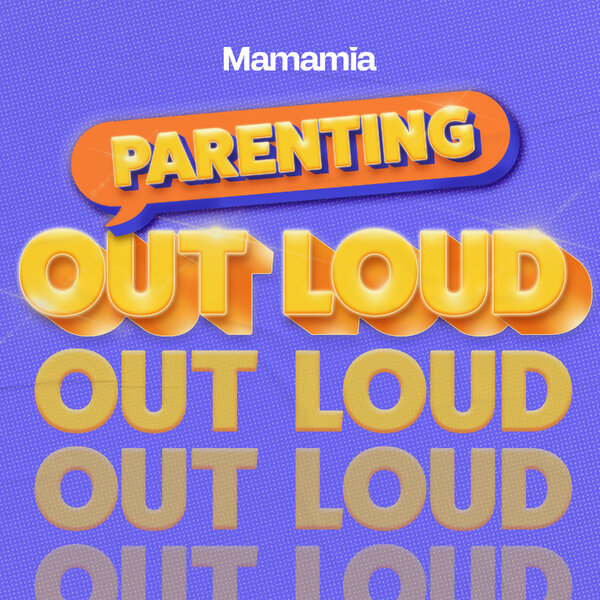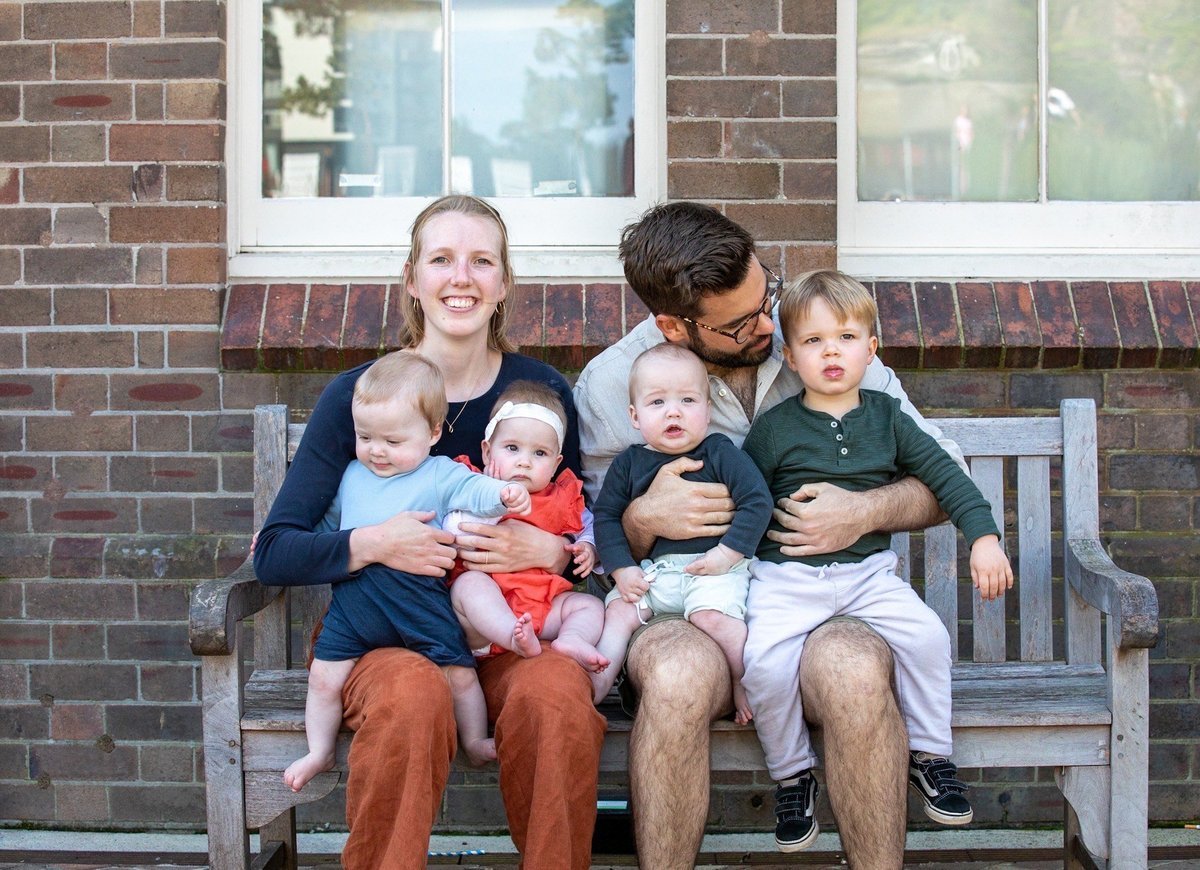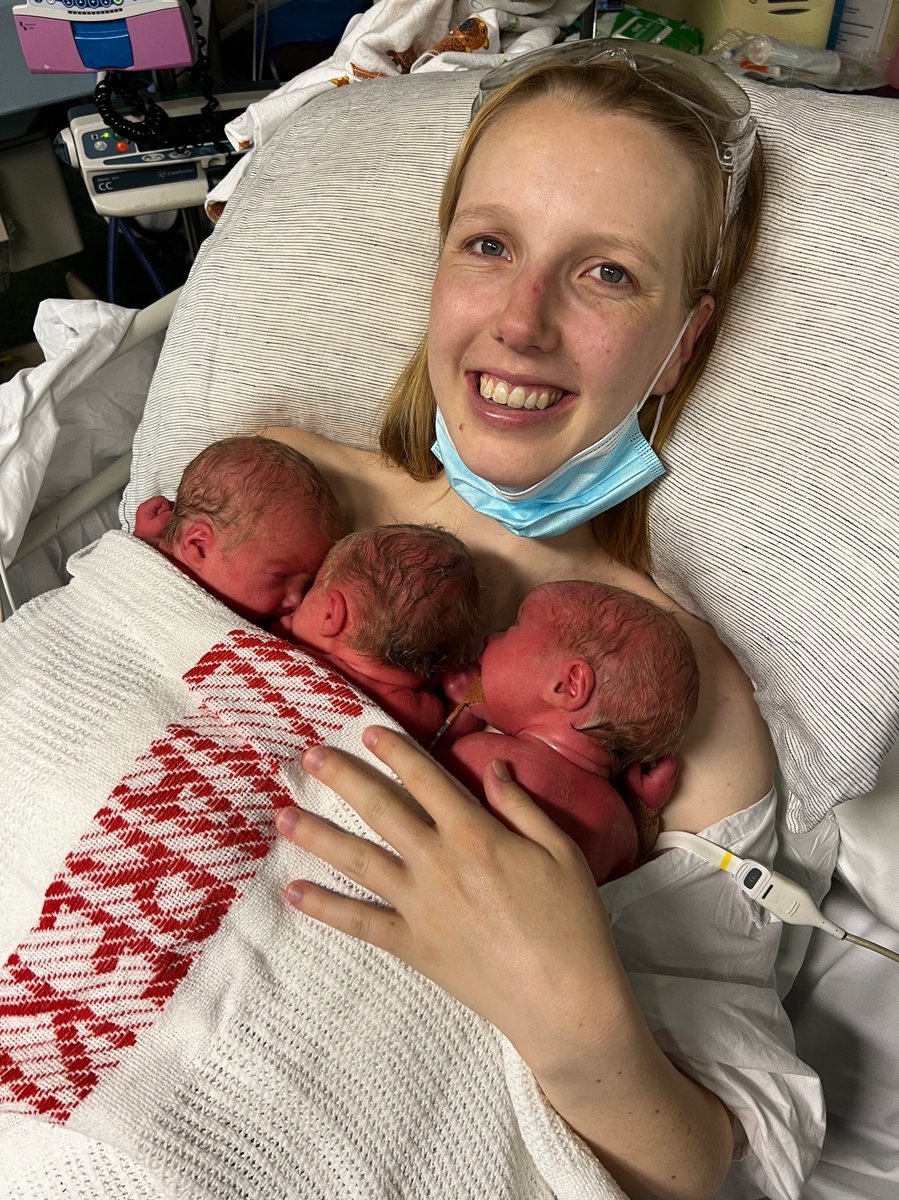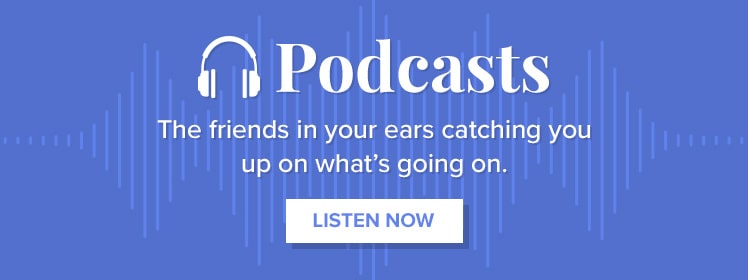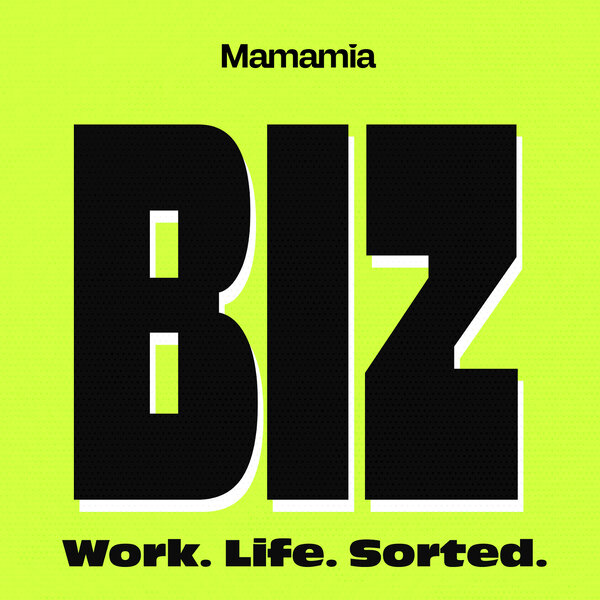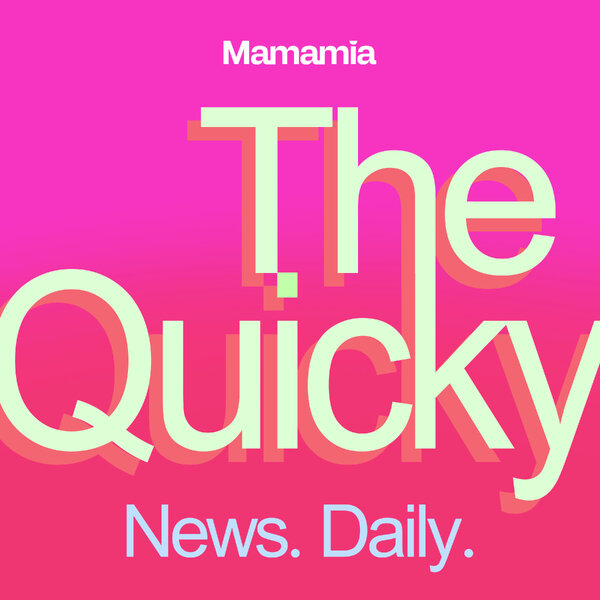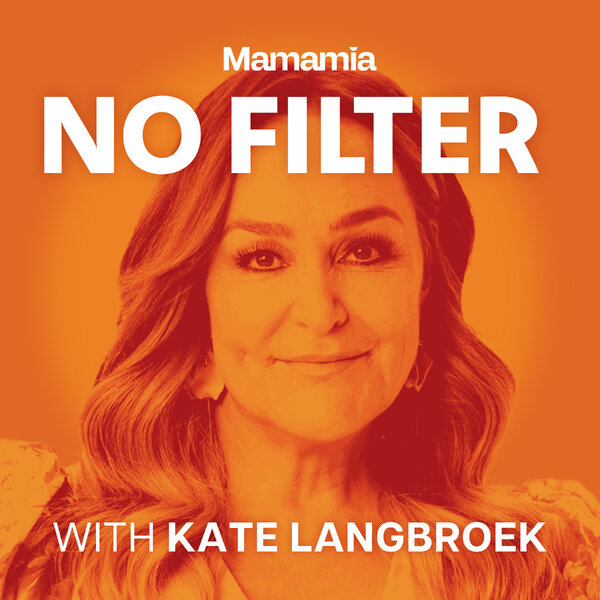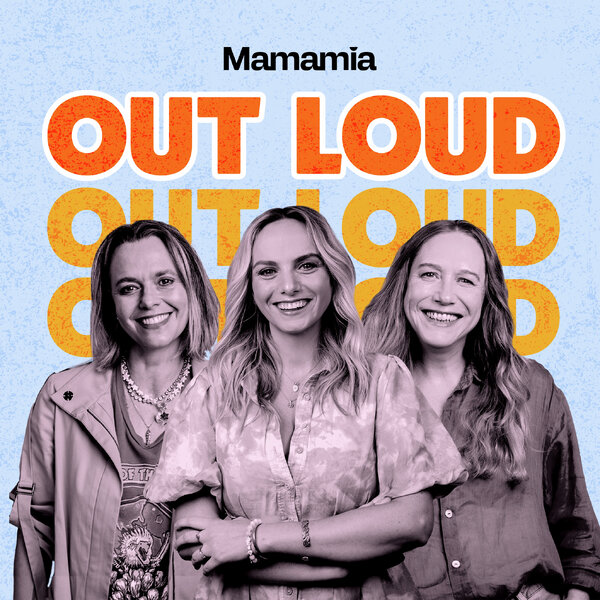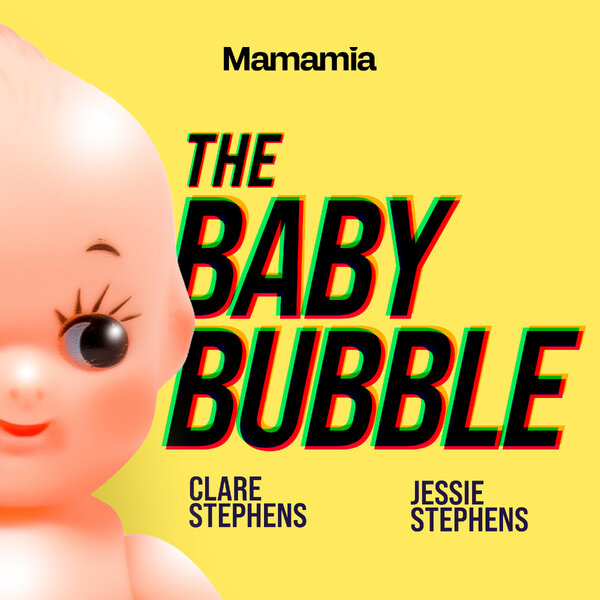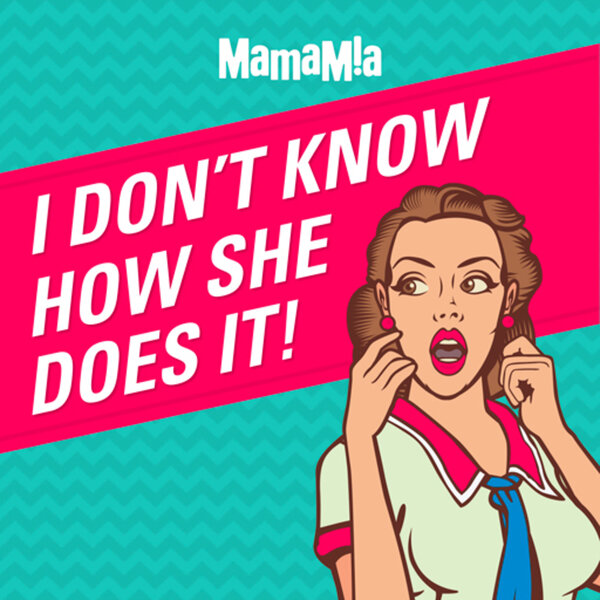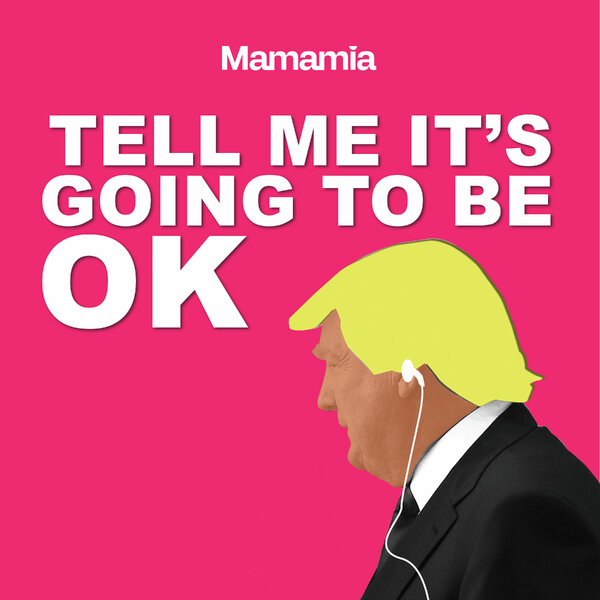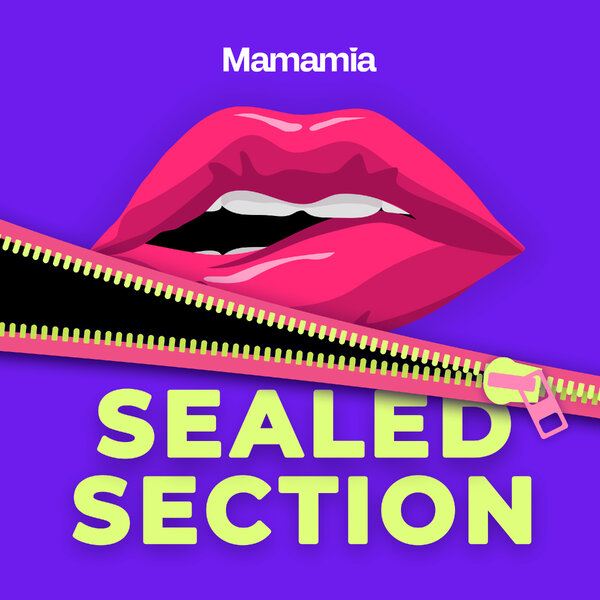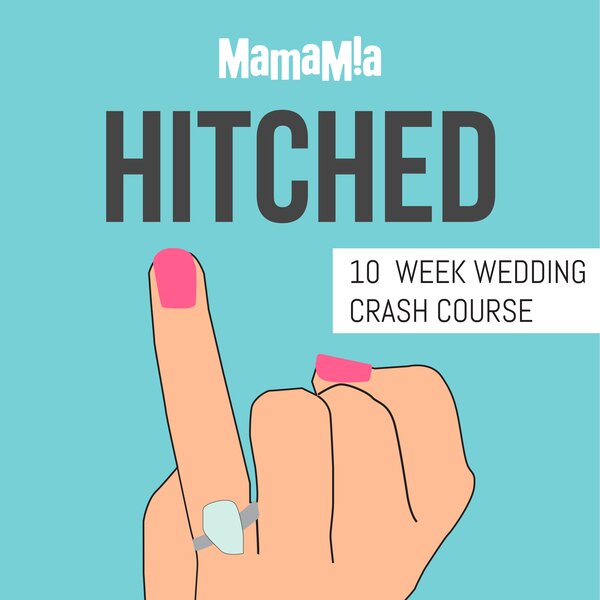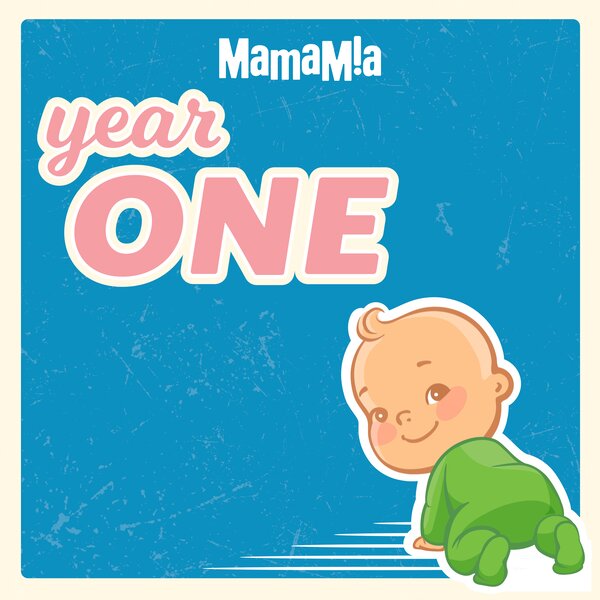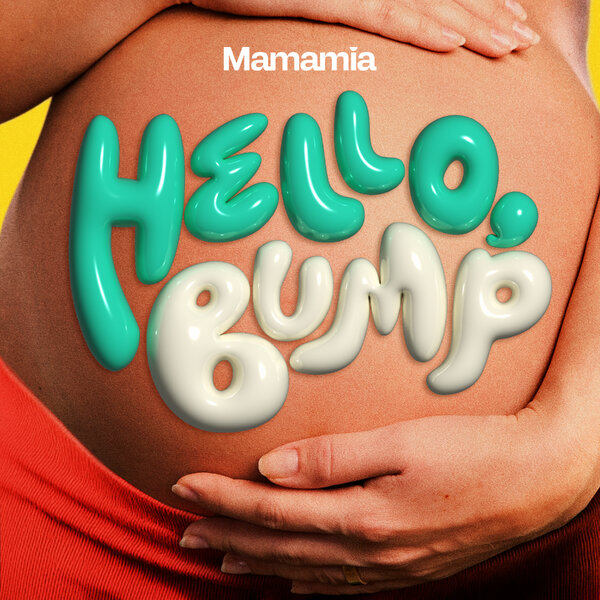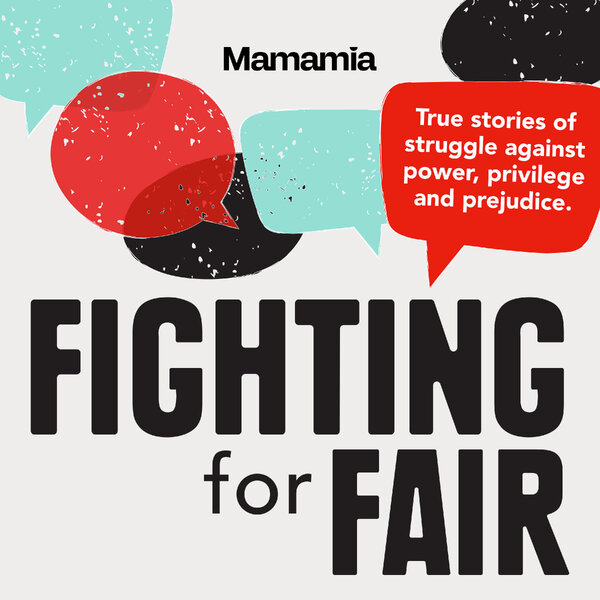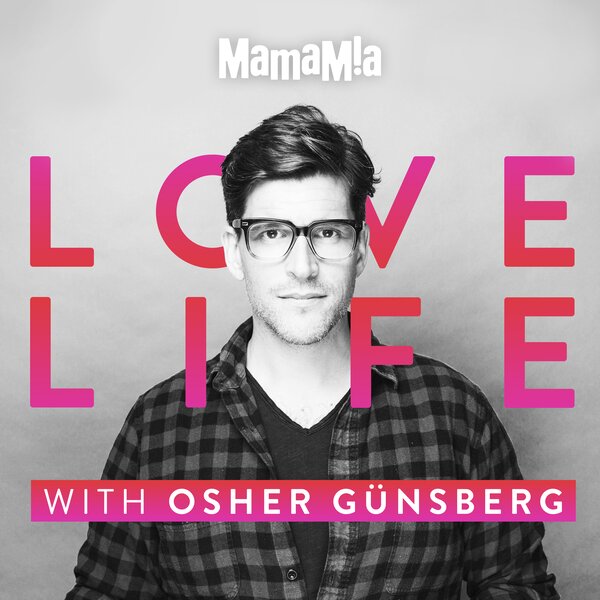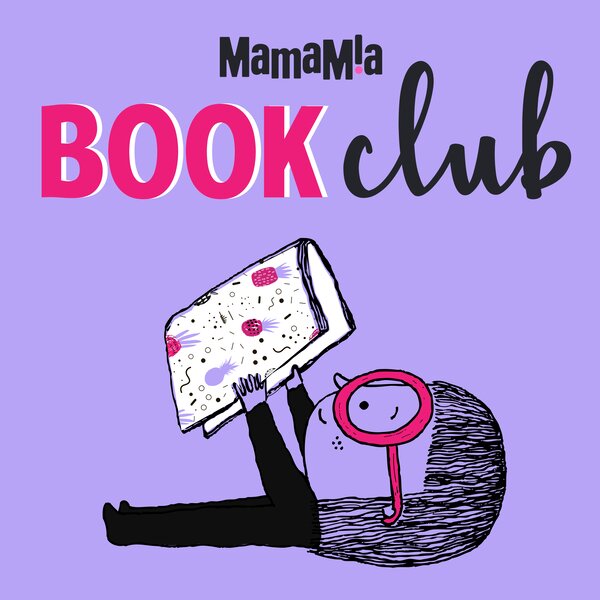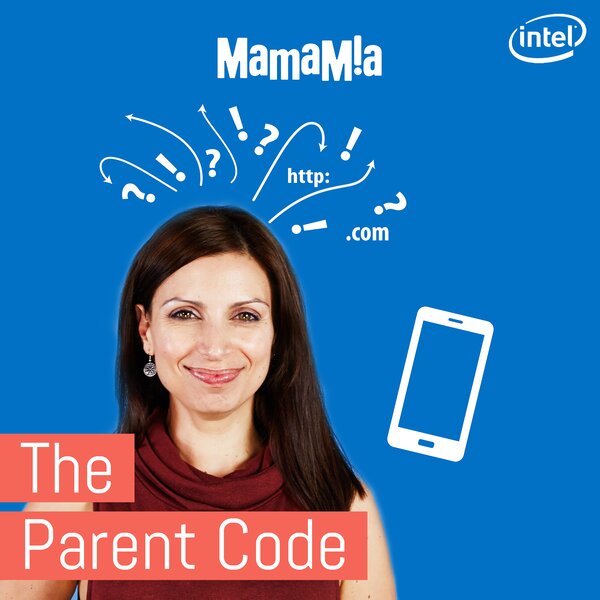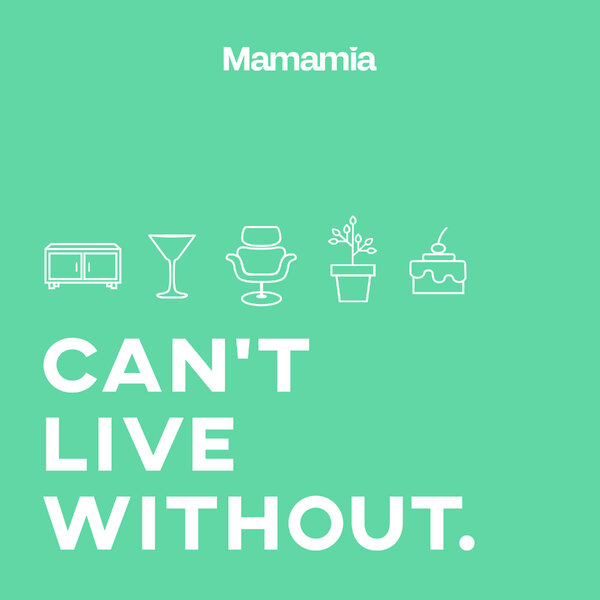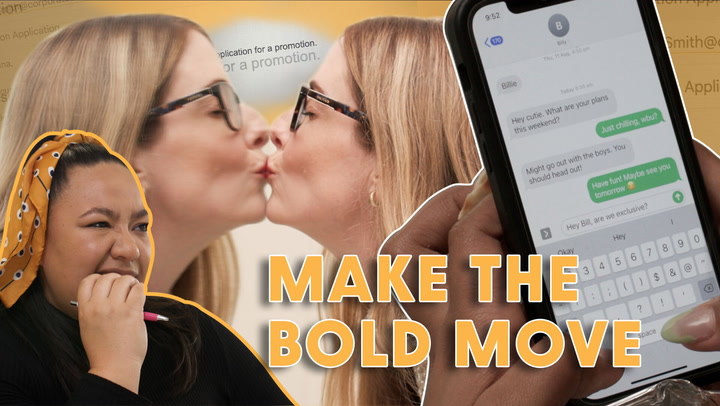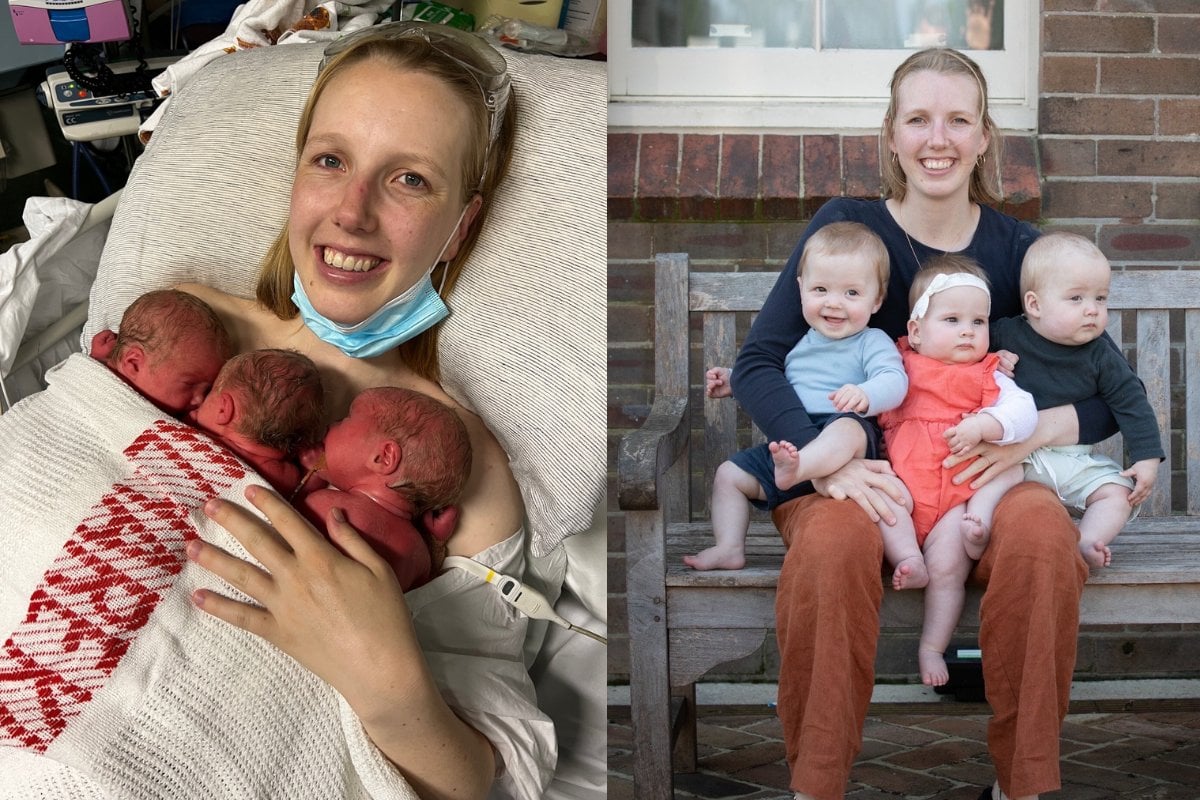
Silje Andersen-Cooke’s son was 18 months old when she and her husband decided to grow their family. They’d have a second child, they thought, then maybe a third — if the economy and their personal finances allowed.
But that second child turned out to be three new additions, with Silje learning at their seven-week dating scan, that she was pregnant with triplets.
Watch: Horoscopes As New Mums. Story continues after video.
Silje found out the news in an average pregnancy scan.
Her obstetrician was already surprised to find a second pregnancy. But as he kept scanning, something else popped up.
"Oh my gosh, twins like that. That's exciting. And then she took a second to be like, and there's a third one over here. And at that point I was like, my eyes were just so shocked. And I was like, please stop counting," she told Mamamia's Diary Of A Birth podcast.
“You can imagine the shock,” the Sydney-based lawyer told Mamamia. “There were just so many anxious thoughts going through my head.”
Her mind went first to her body (how would it cope?), then to the high-risk nature of a triplet pregnancy (should she even get attached to the idea of three babies?). Then it started spiralling with all the practicalities of instantly doubling the size of their family.
